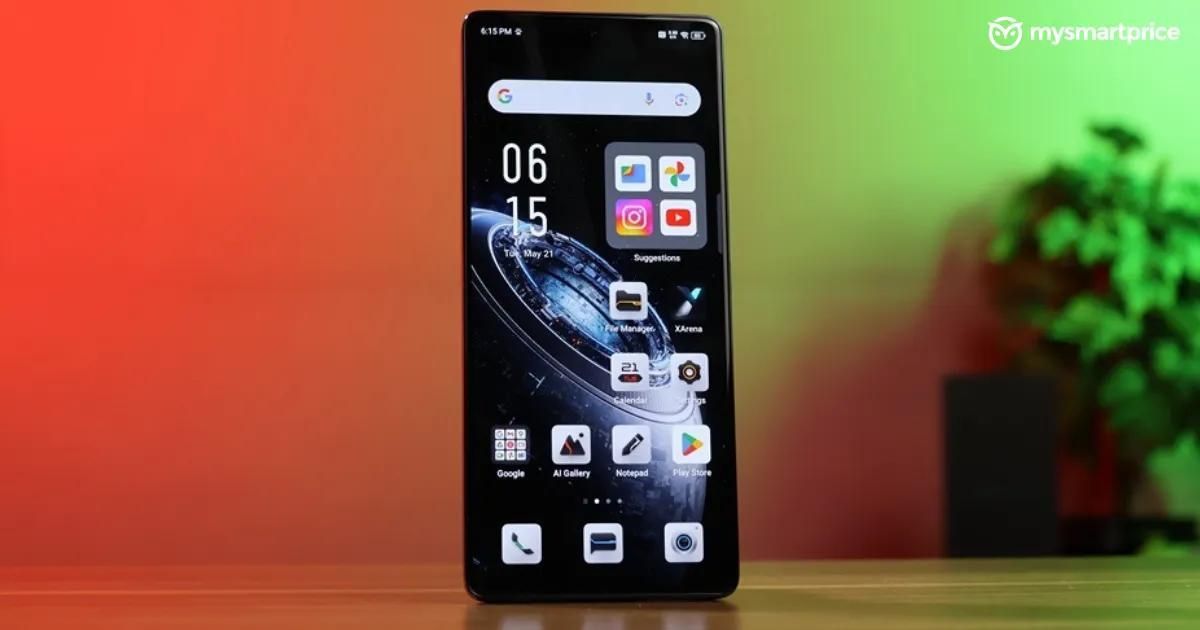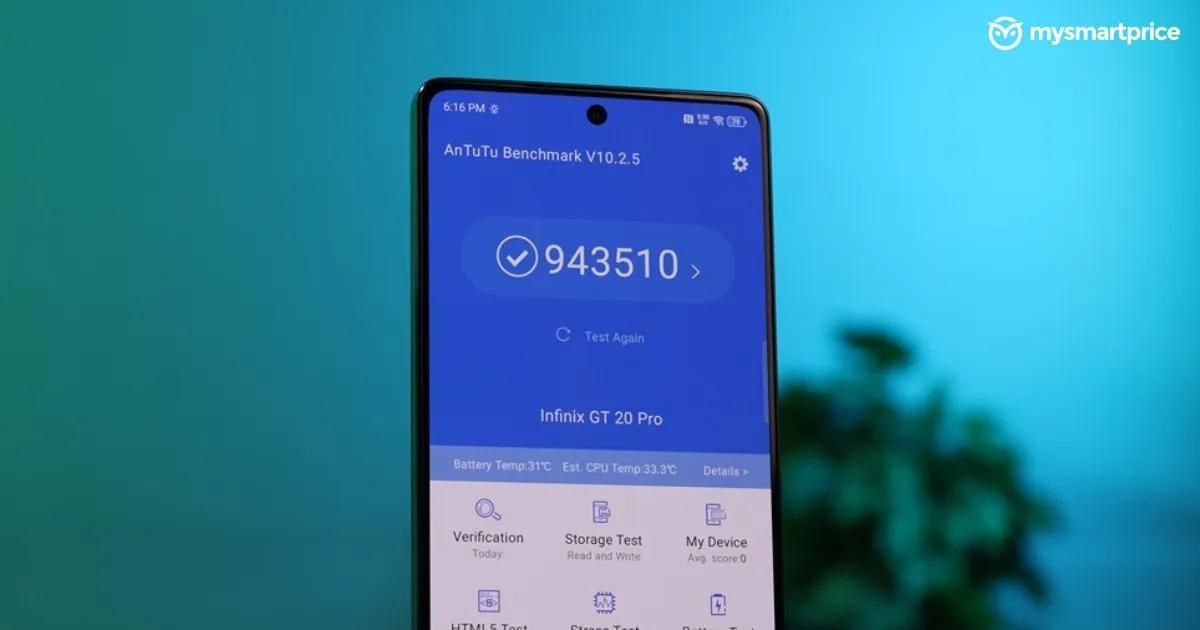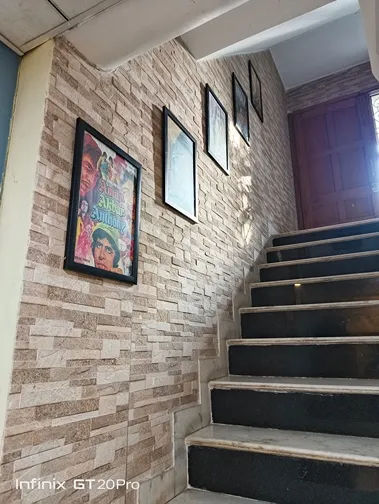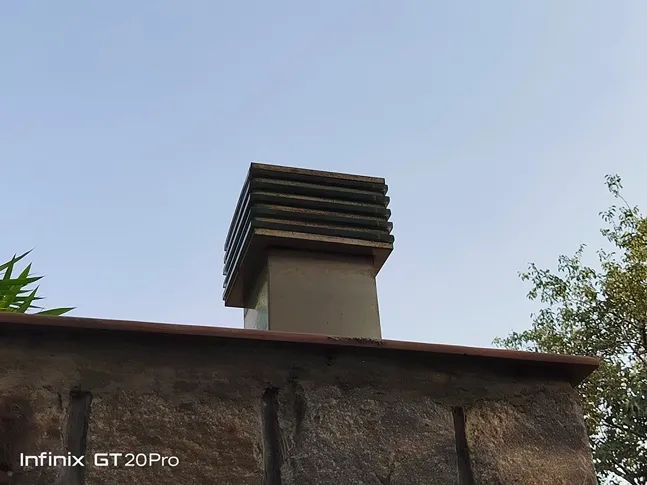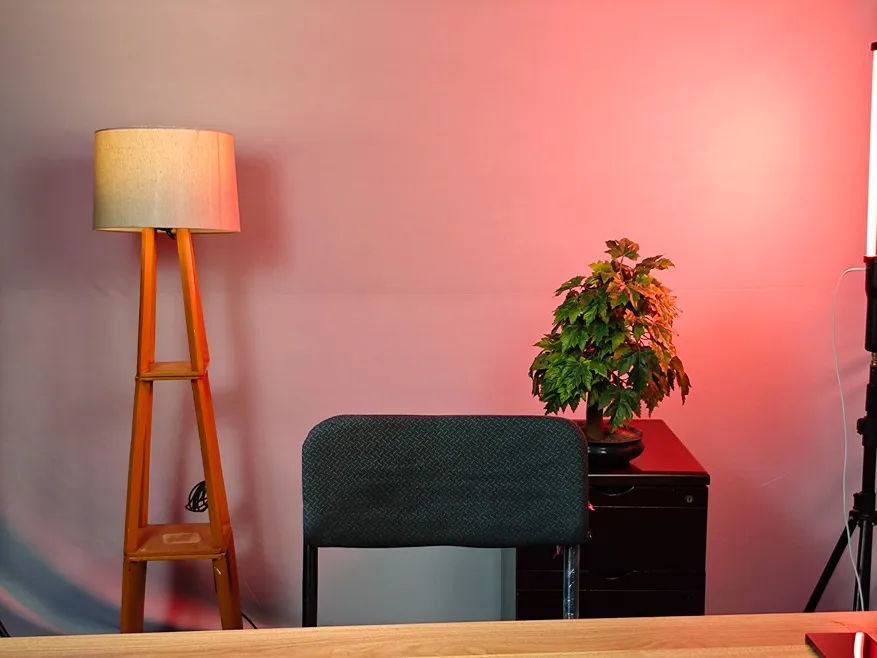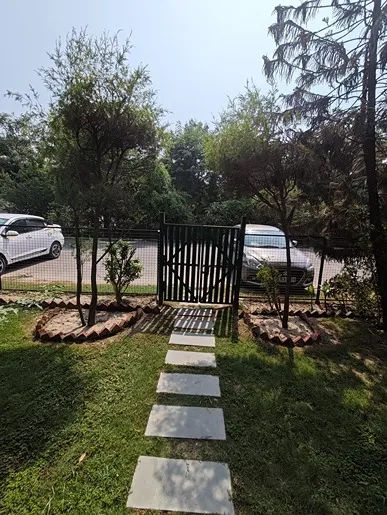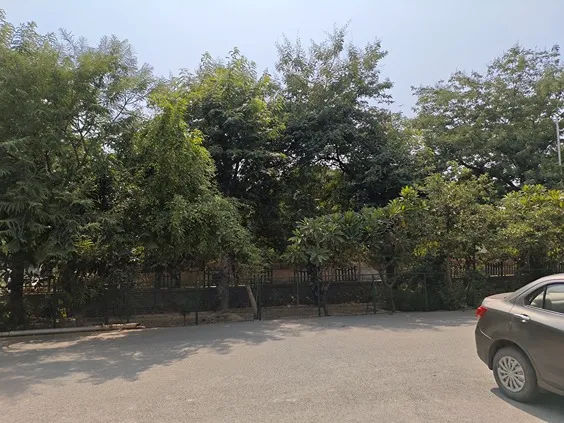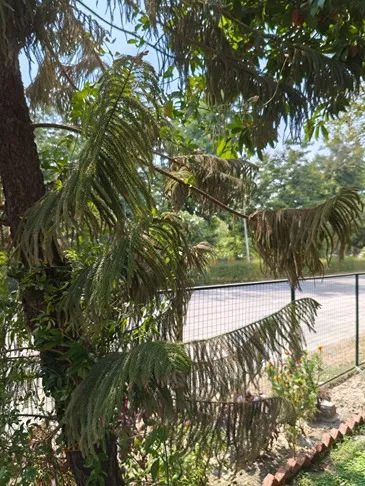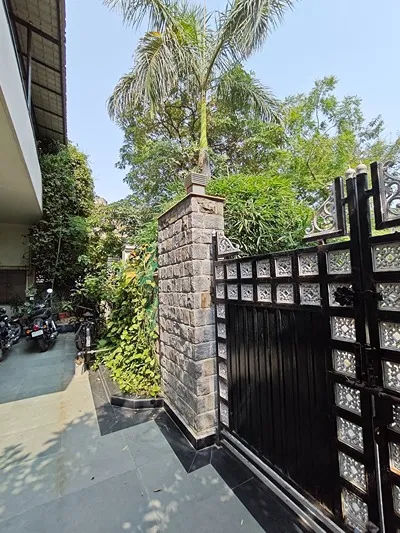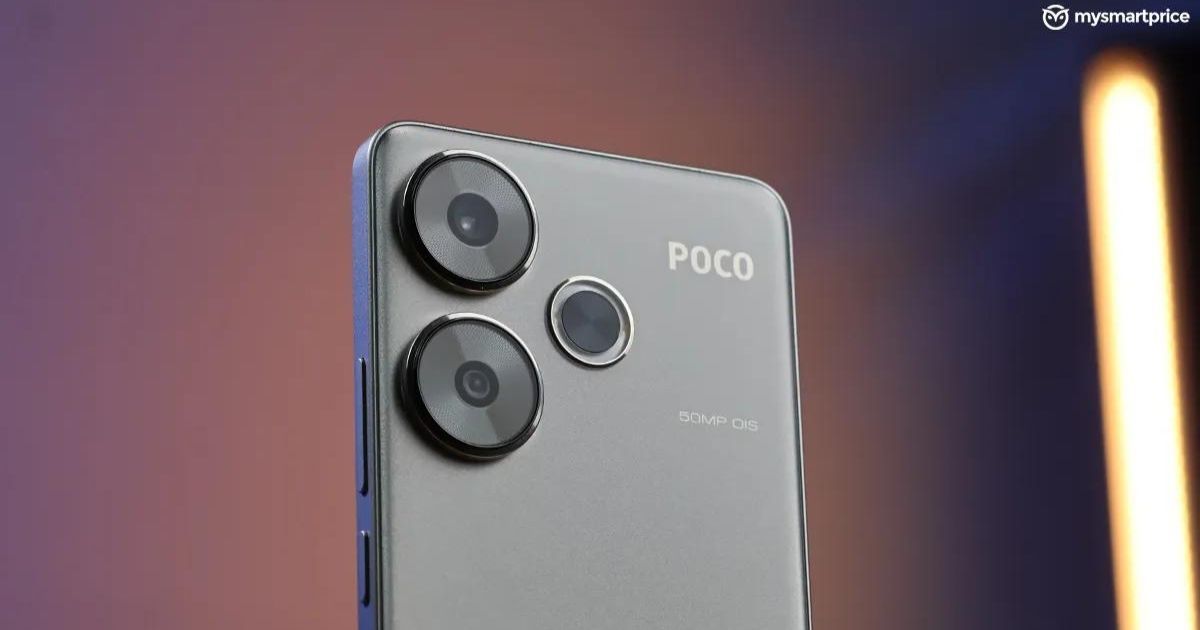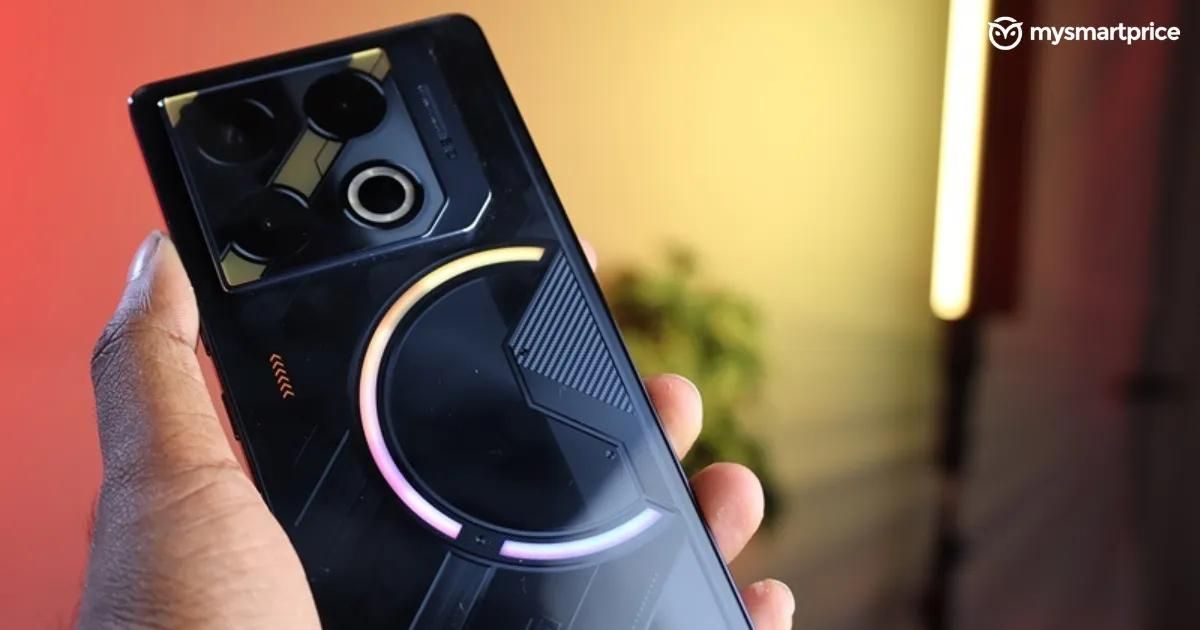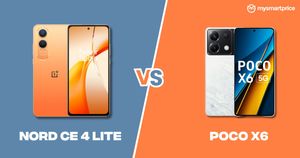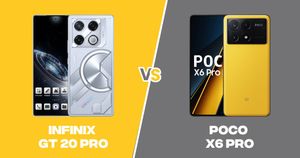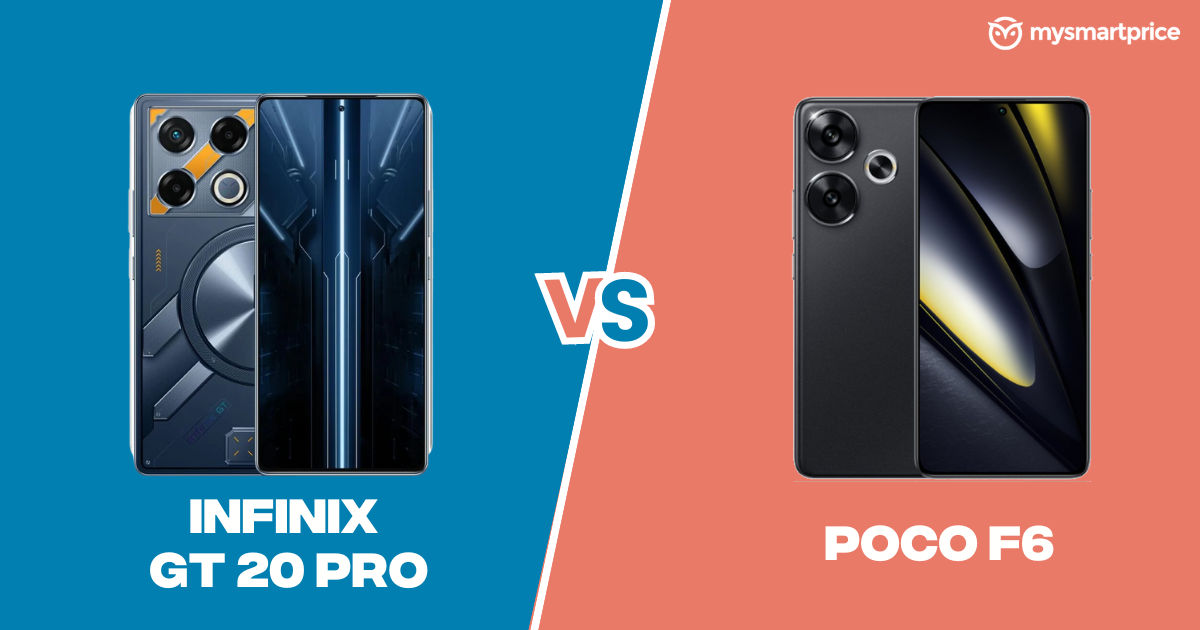
There are several capable phones in the Rs 25,000 and Rs 30,000 space and if you are looking for a power-packed smartphone in the price range, then two names must have popped on your screen: the Infinix GT 20 Pro and the POCO F6. These devices flaunt power-packed spec sheets but not so premium price tags. Having tested both devices, we decided to compare them to help you determine which one is your ideal mid-range powerhouse!
Infinix GT 20 Pro vs POCO F6: Price in India
| Model | Configuration | Price |
|
POCO F6
|
8GB RAM+256GB | Rs 29,999 |
| 12GB RAM+256GB | Rs 31,999 | |
| 12GB RAM+512GB | Rs 33,999 | |
|
Infinix GT 20 Pro
|
8GB RAM+256GB Storage | Rs 24,999 |
| 12GB RAM+256GB Storage | Rs 26,999 |
Infinix GT 20 Pro vs POCO F6: Design
| POCO F6 |
Infinix GT 20 Pro
|
|
| Dimensions | 74.4 x 160.5 x 7.8 mm |
75.4 x 164.3 x 8.2 mm
|
| Weight | 179 g | 194 g |
| Colours | Black, Titanium |
Mecha Blue, Mecha Orange, Mecha Silver
|
The GT 20 Pro comes in three shades: Mecha Blue, Mecha Orange, and Mecha Silver. It gives the gaming device vibes straight out of the box. The Mecha Orange variant we got for the review features an RGB light setup on the back, which can be used for notifications, music, and incoming calls. However, the glossy back of the GT 20 Pro attracts smudges. The colour we got was somewhat dark, so it didn’t bother us much.

On the other hand, the F6 comes in a bland Titanium colour, which does little to set it apart. The back is made entirely of plastic and has a coarse texture that resists fingerprints and smudges. Additionally, the back curves into the flattened sides with a matte finish, making the phone easier to grip.

We know that design is a personal choice. But here, the difference in the design aspect is pretty straightforward. If you prefer a funky and powerful-looking smartphone that glows from the back, the answer is the GT 20 Pro. However, if you are looking for a sleeker and lighter smartphone, then the F6 should be your pick.
Infinix GT 20 Pro vs POCO F6: Display
| POCO F6 |
Infinix GT 20 Pro
|
|
| Type | Color AMOLED Screen (68.7B) |
Color AMOLED Screen (1B Colors)
|
| Size | 6.67 inches, 1220 x 2712 pixels, 120 Hz |
6.78 inches, 1080 x 2436 pixels, 144 Hz
|
| Aspect Ratio | 20:9 | 20.5:9 |
| PPI | ~ 446 PPI | ~ 388 PPI |
| Screen-to-Body Ratio | ~ 94.27% | ~ 94.3% |
| Features | Dolby Vision, Contrast: 5,000,000:1, 1920Hz PWM Dimming, 2400 Nits Peak Brightness, 2160Hz Instantaneous Touch Sampling Rate, 100% DCI-P3 |
100% DCI-P3 Color Gamut, Upto 1300nits Peak Brightness, 2304Hz PWM Frequency
|
The GT 20 Pro upholds its gaming standards by featuring a 144Hz refresh rate panel. The 6.78-inch AMOLED display provides a smooth scrolling experience without noticeable lag or stutter. Besides, the display is sufficiently bright for both indoor and outdoor use. However, under direct sunlight, you may need to adjust the viewing angle to read important notifications or scroll through Instagram.
The F6 flaunts an amazing AMOLED display with a 120Hz refresh rate, which delivers a smooth scrolling experience. But it seems to lag when compared with the 144Hz rate of the GT 20 Pro. That said, it packs cool AI stuff like “Super-resolution” and “AI HDR enhancement”. The former upscales the resolution of the videos and the latter plays on the dynamic range of the content on the phone and processes it in a way that helps the details pop into the screen’s lighter and darker areas. It also offers other display settings like sunlight mode, advanced textures, and more.
So, if 144Hz matters to you a lot, then the GT 20 Pro is a no-brainer. However, if you like tweaking the settings more and want to experience AI, then the F6 is also not a bad choice.
Infinix GT 20 Pro vs POCO F6: Performance and UI
| POCO F6 |
Infinix GT 20 Pro
|
|
| OS | Android 14 | Android 14 |
| UI | Hyper OS | XOS 14 |
| Chipset | Qualcomm Snapdragon 8s Gen 3 |
Mediatek Dimensity 8200 Ultimate
|
| CPU | 3 GHz, Octa Core Processor |
3.1 GHz, Octa Core Processor
|
| GPU | Adreno 735 |
Mali-G610 MC6
|
The GT 20 Pro is a solid device for daily multitasking and gaming requirements. It can handle chores like answering calls, chatting on WhatsApp, or scrolling through Instagram reels easily.
While playing BGMI, features like Esports mode are available, which disable all notifications and incoming calls. Enabling this mode benefits those who want to focus solely on the game. Overall, playing BGMI for an hour was smooth to a certain extent, with the highest settings consistently achieving 90fps without major lags.
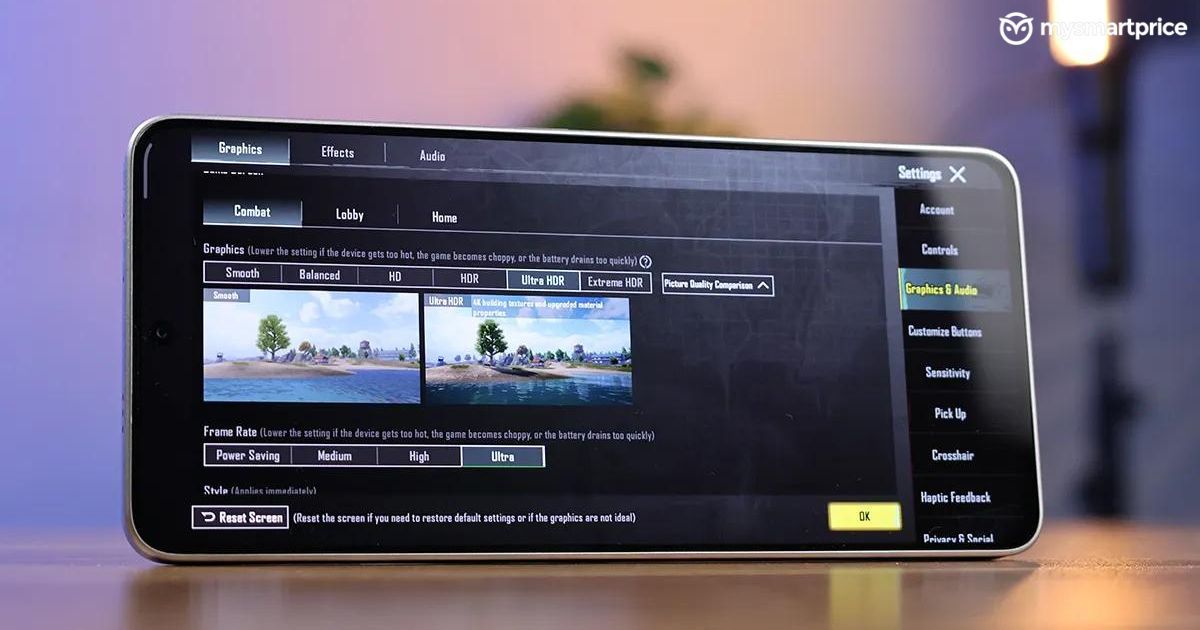
On the flip side, Poco has opted for the Snapdragon 8s Gen 3 SoC, which is essentially built on the same framework as its flagship counterparts but comes with some added AI capabilities. Unfortunately, the F6 does not offer groundbreaking AI features, except for a few related to the display.
Handling daily tasks and switching between multiple apps was effortless for the F6. It performed well in gaming, offering almost all necessary settings in BGMI and Call of Duty: Mobile. It supports the “Ultra HDR” graphics preset and “Ultra” framerate. While the phone generally was consistent, we noticed a few random frame drops in the middle of fights. But there’s nothing to complain about.
We ran popular benchmarks like AnTuTu and Geekbench on both phones. Here’s how the GT 20 Pro and F6 stack up:
Moreover, both phones run Android 14 and offer ample customisation options. In terms of updates, Infinix has promised to deliver two years of OS updates and three years of security patches, whereas POCO offers three years of OS updates and two years of security updates. Regarding bloatware, there are none on the GT 20 Pro, but unfortunately, F6 has a barrage of bloatware, and some of those apps keep sending spam notifications, which can get annoying.
Infinix GT 20 Pro vs POCO F6: Cameras
| POCO F6 |
Infinix GT 20 Pro
|
|
| Rear Cameras | 50MP+8MP |
108MP+2MP+2MP
|
| Front Camera | 20MP | 32MP |
| Video Features | 4K @ 60 fps UHD, 1080p @ 60 fps FHD |
4K @ 60 fps UHD, 1080p @ 60 fps FHD
|
The primary sensor on the GT 20 Pro captures photos with rich details and vibrant colours, though red tones can appear excessively saturated. The photos have a controlled dynamic range, maintaining exposure and shadows well in most situations. They are suitable for social media and have minimal editing needs. Here are some camera samples of the GT 20 Pro:
Now, if we move to the optics on the F6, then the daytime photos will have excellent details and accurate colour reproduction. The image processing is commendable for not over-saturating the photos. The dynamic range is also balanced, ensuring highlights in daytime shots are not blown out. The camera focuses quickly and has a fast shutter speed. Portrait mode works exceptionally well, with accurate edge detection. Now, let’s explore some camera samples:
Infinix GT 20 Pro vs POCO F6: Battery Life and Charging
Both the phones pack the standard 5,000mAh battery. The GT 20 Pro supports 45W charging, whereas the F6 comes with a 120W charger in the box, but the phone supports only up to 90W charging.
When we started charging the GT 20 Pro, it went from 0 to 51% in just 30 minutes and the full charge took around 1 hour and 3 minutes. On the other hand, the F6 took about 45 minutes to go from 0 to 100%.
In terms of battery life, the GT 20 Pro delivered around 6 to 7 hours of screen on time with moderate usage. The F6 also delivered reliable screen-on time and easily lasted an entire day with moderate usage. During a two-hour intensive gaming session, the F6 lost about 45 per cent of its battery. We also ran a PCMark test on both devices and here are its results:
| POCO F6 |
Infinix GT 20 Pro
|
|
| PCMark Battery Test | 12 hours 39 minutes |
7 hours 21 minutes
|
Verdict
If you want an aggressive design approach, LED lights at the back, amazing gaming capabilities, and a super-fast refresh rate, then the Infinix GT 20 Pro makes more sense. However, if you prefer lightweight devices with more muted and regular designs and the best display experience, then the POCO F6 makes more sense.
Having said that, both are powerful and capable of handling almost anything you throw at them easily. It’s more of a personal choice of what aspect you like better!


